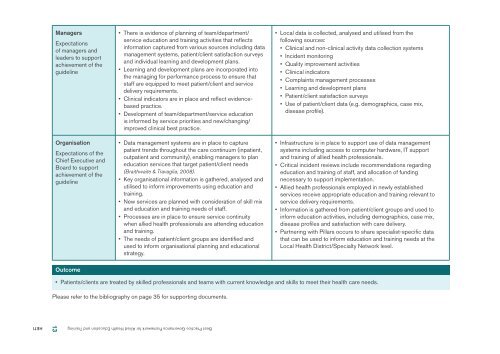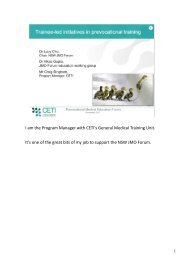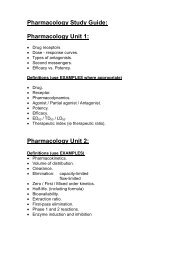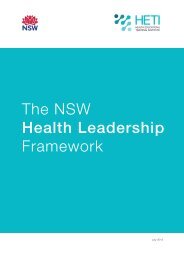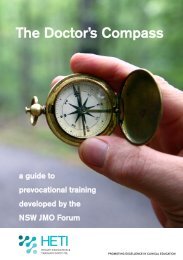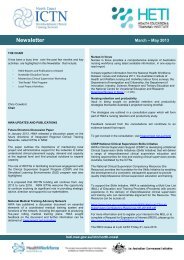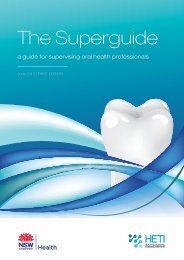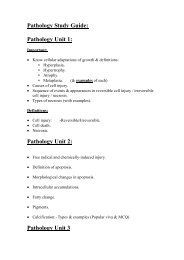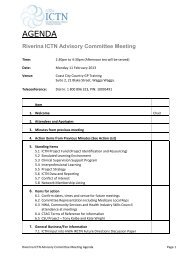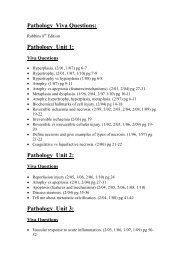Open - HETI
Open - HETI
Open - HETI
- No tags were found...
You also want an ePaper? Increase the reach of your titles
YUMPU automatically turns print PDFs into web optimized ePapers that Google loves.
ManagersExpectationsof managers andleaders to supportachievement of theguidelineOrganisationExpectations of theChief Executive andBoard to supportachievement of theguideline• There is evidence of planning of team/department/service education and training activities that reflectsinformation captured from various sources including datamanagement systems, patient/client satisfaction surveysand individual learning and development plans.• Learning and development plans are incorporated intothe managing for performance process to ensure thatstaff are equipped to meet patient/client and servicedelivery requirements.• Clinical indicators are in place and reflect evidencebasedpractice.• Development of team/department/service educationis informed by service priorities and new/changing/improved clinical best practice.• Data management systems are in place to capturepatient trends throughout the care continuum (inpatient,outpatient and community), enabling managers to planeducation services that target patient/client needs(Braithwaite & Travaglia, 2008).• Key organisational information is gathered, analysed andutilised to inform improvements using education andtraining.• New services are planned with consideration of skill mixand education and training needs of staff.• Processes are in place to ensure service continuitywhen allied health professionals are attending educationand training.• The needs of patient/client groups are identified andused to inform organisational planning and educationalstrategy.• Local data is collected, analysed and utilised from thefollowing sources:• Clinical and non-clinical activity data collection systems• Incident monitoring• Quality improvement activities• Clinical indicators• Complaints management processes• Learning and development plans• Patient/client satisfaction surveys• Use of patient/client data (e.g. demographics, case mix,disease profile).• Infrastructure is in place to support use of data managementsystems including access to computer hardware, IT supportand training of allied health professionals.• Critical incident reviews include recommendations regardingeducation and training of staff, and allocation of fundingnecessary to support implementation.• Allied health professionals employed in newly establishedservices receive appropriate education and training relevant toservice delivery requirements.• Information is gathered from patient/client groups and used toinform education activities, including demographics, case mix,disease profiles and satisfaction with care delivery.• Partnering with Pillars occurs to share specialist-specific datathat can be used to inform education and training needs at theLocal Health District/Specialty Network level.Outcome• Patients/clients are treated by skilled professionals and teams with current knowledge and skills to meet their health care needs.Please refer to the bibliography on page 35 for supporting documents.13Best Practice Governance Framework for Allied Health Education and Training <strong>HETI</strong>


